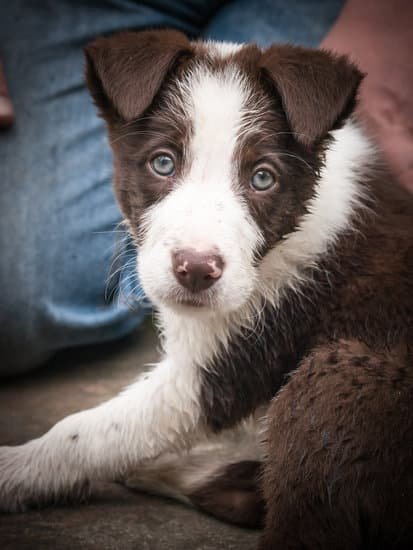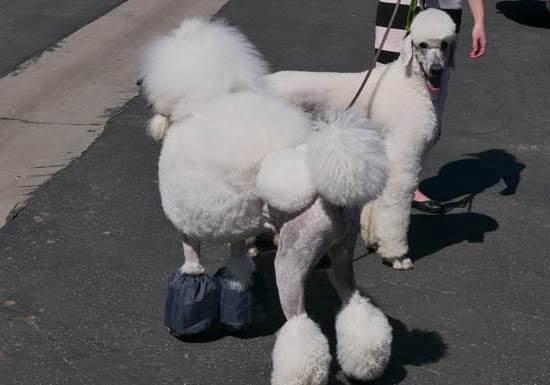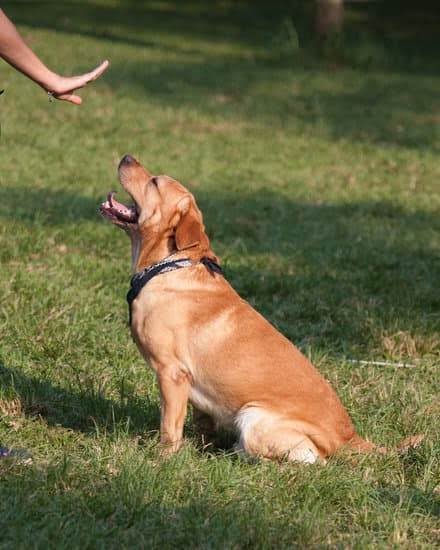Military dogs are trained for a variety of tasks that make them indispensable assets to the armed forces. With their remarkable abilities and unwavering loyalty, these four-legged soldiers play a crucial role in combat zones, search and rescue operations, bomb detection, drug detection, and even military police and security roles.
The training that military dogs undergo is rigorous and extensive, ensuring that they are equipped with the necessary skills to carry out their duties effectively. In this article, we will delve into the world of military dogs, exploring their origins, selection process, training programs, and the vital roles they fulfill in service to their handlers and country.
The history of military dogs dates back centuries, with various civilizations utilizing canines in warfare. These loyal companions have accompanied soldiers on the battlefield, acting as sentries, messengers, scouts, trackers, and even soldiers themselves. Over time, their roles have evolved and expanded to match the demands of modern warfare. Today’s military dogs are highly trained professionals capable of performing a wide range of tasks essential to military operations.
The selection process for military dogs is stringent and selective. Only those who demonstrate exceptional aptitude and temperaments are chosen to undergo training. This process involves thorough evaluations of their health, genetics, intelligence, agility, obedience levels, fearlessness, and adaptability. Dogs selected for military service undergo intensive training programs where they acquire basic skills such as obedience commands but also receive specialized training tailored to specific tasks like bomb or drug detection or search and rescue operations.
In the following sections of this article series on “What Are Military Dogs Trained For,” we will explore in depth the fascinating world of these incredible animals serving alongside our armed forces.
From understanding their history and origins to uncovering the rigorous selection processes they undergo; from delving into their comprehensive training programs to examining their crucial roles in combat zones; we will shed light on every aspect that makes military dogs such invaluable assets in protecting our nations and saving lives.
Understanding the Origins and History of Military Dogs
Military dogs have a long and storied history that dates back centuries. The use of dogs in warfare can be traced back to ancient civilizations such as the Egyptians, Greeks, and Romans. These early civilizations recognized the unique abilities of dogs and utilized them for a variety of military tasks.
One of the earliest documented uses of military dogs was by the ancient Egyptians. Hieroglyphs and artwork from this time period depict dogs being used in combat situations, such as hunting down enemies and guarding important locations. The Greeks and Romans also employed dogs in warfare, often using them as sentries or to carry messages between troops.
In more recent history, military dogs played a crucial role during both World Wars. Dogs were used for various purposes including message delivery, scouting, and guarding military installations. In World War II, the United States began utilizing specially trained war dogs known as “K-9 Corps”. These dogs were trained in a range of skills including search and rescue, tracking, detection of mines and booby traps, and providing support to soldiers on the battlefield.
Today, military dogs continue to serve alongside their human counterparts in modern armies around the world. The roles of these dogs have evolved with advancements in technology and changes in military tactics. Yet their origins remain firmly rooted in ancient civilizations that recognized the exceptional abilities that dogs possess. Through centuries of utilization and refinement, these remarkable animals have proven themselves to be invaluable assets on the battlefield.
The Rigorous Selection Process
Military dogs play a crucial role in various operations, from combat zones to search and rescue missions. However, not every dog can become a military dog. The selection process is rigorous and stringent, ensuring that only the most capable and suitable dogs are chosen for service.
The selection process begins with careful breeding and screening, as it is essential to start with dogs who have the right temperament and physical attributes for military work. Common breeds used as military dogs include German Shepherds, Belgian Malinois, Labrador Retrievers, and Dutch Shepherds. These breeds are known for their intelligence, strength, agility, and loyalty.
Once potential candidates are identified, they undergo a series of tests and evaluations to assess their suitability for military work. This includes tests to measure their drive, intelligence, fearlessness, adaptability, obedience, and socialization skills. Additionally, their physical health is carefully examined to ensure they can handle the demands of military service.
During the rigorous selection process, trainers look for specific qualities in potential military dogs. These include excellent drives such as hunt drive (the desire to search for objects), prey drive (the instinct to chase), fight drive (the willingness to engage in conflict), retrieve drive (the instinct to bring objects back), pack drive (the ability to work effectively with other dogs), and defense drive (the readiness to protect or defend).
Dogs that demonstrate these qualities are more likely to excel in the demanding training that lies ahead.
| Selection Criteria | Qualities Sought |
|---|---|
| Temperament | Fearlessness |
| Physical Health | Strength |
| Socialization Skills | Loyalty |
| Drives | Hunt, prey, fight, retrieve, pack, defense |
Enlistment Training
Enlistment training is a crucial phase in the development of a military dog. During this stage, they learn the basic skills and behaviors that form the foundation of their service. These skills are essential for the dogs to adapt to the rigorous demands of military life and become effective assets to their handlers and units.
One important aspect of enlistment training is obedience. Military dogs are taught to follow commands without hesitation or distraction. This includes basic commands such as sit, stay, heel, and come. Obedience is vital for ensuring that the dog can be controlled even in high-stress situations.
Another key skill that military dogs must master during enlistment training is socialization. They are exposed to various environments, noises, people, and animals to acclimate them to different scenarios they may encounter in their line of duty. This helps prevent fear or aggression towards unfamiliar elements and allows them to remain focused on their tasks.
Physical fitness is also emphasized during enlistment training. Military dogs undergo endurance exercises and conditioning routines to build strength and stamina. They need sufficient agility and physical capability to perform tasks such as patrolling, tracking suspects, or engaging in search and rescue operations.
Specialized Training for Different Roles
Once military dogs have mastered the basic skills required for any service role, they undergo specialized training based on their intended function within the military. Depending on their aptitude and abilities, they may be trained for roles such as explosive detection, drug detection, tracking down suspects or enemies, or working alongside military police.
For example, dogs trained in bomb detection will learn how to detect various types of explosives by sniffing out minute traces left behind by these substances. They are taught passive indication techniques such as sitting or lying down when they discover an odor source.
Those trained for tracking operations will undergo intensive training in scent discrimination. They learn how to identify and follow a specific scent trail, even in challenging environments. This enables them to track down missing persons or locate hidden enemies during combat operations.
Maintaining High Standards
Enlistment training for military dogs is designed not only to teach them skills but also to assess their suitability for service. The standards are set high to ensure that only the most capable and dedicated dogs make it through the rigorous process. Those who do not meet the required level of proficiency may be retrained or redirected to other tasks that align with their strengths.
Overall, enlistment training plays a crucial role in preparing military dogs for their duties ahead. It serves as a strong foundation upon which specialized training can be built, ensuring that these remarkable animals possess the necessary skills and abilities to carry out their roles effectively and protect the lives of those they serve alongside.
Becoming an Elite Soldier
Military dogs undergo specialized training to become efficient and reliable soldiers on the battlefield. This training is focused on developing their skills in specific areas, enabling them to excel in various tasks and missions. From explosive detection to search and rescue operations, military dogs are trained to carry out their duties with precision, agility, and unwavering loyalty.
One of the key aspects of specialized training for military dogs is explosive detection. These canine heroes are trained to detect a wide range of explosives, including those commonly used by terrorists in combat zones.
By using their unparalleled senses of smell, they can quickly and accurately locate hidden explosive devices before they cause harm to both humans and infrastructure. Through rigorous training that involves deliberate exposure to various scents associated with explosives, military dogs learn to differentiate between target odors and distractions, ensuring the safety of their handlers and fellow soldiers.
Search and rescue operations are another critical area in which military dogs receive specialized training. Their keen sense of smell allows them to locate missing persons or trapped individuals in various terrains and conditions.
Whether it’s locating survivors in disaster-stricken areas or tracking down enemy combatants who have fled during a conflict, these highly trained canines play a crucial role in saving lives and providing vital support to search and rescue teams. Their physical endurance, agility, and obedience make them indispensable assets in navigating challenging environments where human rescuers may face limitations.
In addition to explosive detection and search-and-rescue capabilities, military dogs are also trained for other specialized roles such as scouting, patrolling, sentry duty, and apprehending suspects. They provide an extra layer of security for their human counterparts by detecting potential threats from enemies lurking nearby or approaching from afar.
Their presence alone acts as a deterrent against potential adversaries while their sharp senses allow them to alert their handlers at the first sign of danger. This partnership between canine and soldier on the front lines enhances the effectiveness of military operations, ensuring that no potential threat goes undetected.
The specialized training undergone by military dogs equips them with the skills and instincts necessary to become elite soldiers in their own right. Whether it’s detecting explosives, conducting search and rescue missions, or providing security on the battlefield, these remarkable animals play an invaluable role in the success and safety of military operations. Their dedication, loyalty, and unwavering commitment to their handlers make them true heroes who deserve our admiration and appreciation.
Standing by Their Handlers
The Role of Military Dogs in Combat Zones
Supporting and Protecting Their Handlers
In combat zones, military dogs play a crucial role in supporting and protecting their handlers. These highly trained canines are often the first line of defense, helping to detect potential threats and providing essential backup during dangerous missions. Military dogs have an uncanny ability to accurately assess situations and respond quickly, making them invaluable assets on the battlefield.
One of the primary responsibilities of military dogs in combat zones is to provide security to their handlers. These dogs are trained to alert their handlers to any approaching danger, whether it be enemy combatants, explosive devices, or hidden traps. By using their keen senses, such as smell and hearing, military dogs can detect threats that may otherwise go unnoticed by human soldiers.
Another critical role that military dogs play is in scouting and reconnaissance missions. These highly skilled canines are trained to navigate through various terrains while remaining undetected by the enemy. With their exceptional sense of smell and hearing, these animals can locate hiding places, patrol areas for potential threats, and gather vital intelligence for their human counterparts.
Attack and Apprehension
Moreover, military dogs are also trained for attack and apprehension tasks during combat operations. They assist in capturing or immobilizing enemy combatants when necessary, thereby ensuring the safety of their handlers and fellow soldiers. Through intensive training exercises, these courageous canines learn how to effectively restrain targets without causing severe harm.
Furthermore, military dogs serve an essential role in handling prisoners of war (POWs). They contribute significantly to maintaining order within POW camps by guarding prisoners and preventing escapes. Their mere presence acts as a deterrent against misconduct or unlawful activities among captive individuals.
The Bond Between Handlers and Dogs
The extraordinary bond between handlers and military dogs is another vital aspect contributing to their success on the battlefield. Handlers spend considerable time building trust and developing a strong partnership with their canine counterparts. This bond is essential for effective communication, teamwork, and mutual protection in combat zones.
Unparalleled Senses
Military dogs possess extraordinary sensory abilities that make them highly effective in bomb and drug detection operations. Whether it is locating hidden explosive devices or uncovering illicit substances, these canine heroes play a crucial role in ensuring the safety and security of military personnel and civilians alike.
Bomb Detection: The Canine Nose at Work
One of the primary responsibilities of military dogs is bomb detection. With their unparalleled sense of smell, these canines can detect even the faintest scent of explosives. The olfactory system of a dog is estimated to be 10,000 to 100,000 times more sensitive than that of humans. This means that military dogs are able to sniff out explosives that would otherwise go unnoticed by human senses alone.
During training, military dogs are taught how to identify specific odors associated with various types of explosives. They learn to differentiate between different scents and accurately locate their source. With their keen sense of smell combined with their incredible focus and determination, these dogs can help locate hidden explosive devices before they pose a threat.
Drug Detection: Sniffing Out Illicit Substances
In addition to bomb detection, military dogs also play a vital role in sniffing out drugs. Whether it’s detecting narcotics like cocaine or heroin, or finding large quantities of cash used in illegal activities, these specialized canines have proven instrumental in intercepting drug trafficking operations both domestically and internationally.
Similar to bomb detection training, military dogs are trained to detect particular scents associated with various drugs. Their ability to distinguish between different substances enables them to identify hidden stashes even in the most challenging environments. By alerting their handlers to the presence of illegal drugs, these canine partners provide invaluable support in combating drug-related crimes.
The exceptional olfactory capabilities of military dogs make them an essential asset in bomb and drug detection operations. Their ability to locate hidden explosives and identify illicit substances in a variety of environments is unmatched, making them indispensable members of military and law enforcement teams worldwide.
Tracking Down the Enemy
Military dogs play a crucial role in search and rescue operations, using their exceptional abilities to track down enemies and locate missing individuals in various environments. These highly trained canines possess natural instincts combined with specialized training that enables them to excel in these critical missions.
One of the primary tasks of military dogs in search and rescue operations is tracking and trailing. These dogs are trained to follow a scent trail left by an individual, even if it is several hours or days old. By harnessing their powerful sense of smell, which is hundreds of times more sensitive than that of humans, these canines can efficiently navigate through complex terrains such as dense forests or rugged mountainous regions.
To enhance their tracking capabilities, military dogs are taught to recognize specific scents associated with the enemy. They are trained to differentiate between friendly forces and potential foes, enabling them to effectively locate hidden adversaries during combat situations. This skill is invaluable for ensuring the safety of military personnel by providing early detection and preventing potential threats.
In addition to tracking, military dogs also contribute significantly to the search and rescue efforts during natural disasters or humanitarian crises. Their acute senses allow them to detect the scent of trapped individuals under rubble or debris. By working alongside human rescuers, they can swiftly locate survivors who may be difficult to spot by other means.
Guardians of the Night
Military dogs play a crucial role in military police and security operations, serving as guardians of the night. These highly trained canines are skilled in maintaining safety and protecting troops in various challenging environments.
One key role that military dogs fulfill is patrol and perimeter security. These four-legged soldiers have exceptional senses, particularly their keen sense of smell and hearing, allowing them to detect potential threats before humans can. Their ability to identify intruders or suspicious activity not only helps prevent unauthorized access but also acts as a deterrent to potential attackers.
In addition to patrol and security duties, military dogs are often utilized for specialized tasks such as explosive detection. These brave canines undergo rigorous training to detect explosives, including bomb-making materials, hidden bombs, or improvised explosive devices (IEDs). Their remarkable olfactory capabilities enable them to locate even well-concealed explosives that could pose significant risks to military personnel.
| Military Police and Security Roles | Data |
|---|---|
| Patrol and Perimeter Security | Maintain safety and protection by detecting potential threats through their exceptional senses. |
| Explosive Detection | Rigorous training enables them to locate well-concealed explosives that could harm military personnel. |
Moreover, military dogs are trained to apprehend suspects or individuals who pose a threat. Their agility, speed, and strength make them an invaluable asset in detaining hostile persons during security operations. Military police working closely with these courageous canines benefit from their unwavering loyalty and dedication, increasing the effectiveness of law enforcement efforts.
The presence of military dogs also significantly boosts the morale of troops. Knowing that these loyal companions are there to protect them provides a sense of security and trust within military units. Their mere presence can serve as a reassuring reminder that they stand guard, ready to mitigate risks and assist when needed.
The Mental Toll
Military dogs play a crucial role in various operations, utilizing their exceptional abilities and training to assist their human counterparts. However, the demanding nature of their work can take a toll on their mental well-being. Recognizing the importance of caring for the emotional health of military dogs, specialized programs have been implemented to ensure that they receive the support they need.
Taking into account the mental toll that military service can have on these loyal animals shines a light on the importance of providing them with proper support throughout their careers and beyond. By prioritizing their emotional well-being, we honor and respect these remarkable creatures who selflessly serve alongside our armed forces.
Life after Service
After years of dedicated service, military dogs eventually reach a point where it is time for them to retire. Just like their human counterparts, these courageous canines deserve a well-earned rest and a comfortable life in their retirement years. However, the transition from an active duty military dog to civilian life is not always easy. In this section, we will explore the process of retiring and rehoming military dogs.
When a military dog reaches retirement age, typically between 8 and 10 years old depending on breed and physical condition, they go through a careful assessment to determine if they are suitable for adoption. The process involves evaluating their health, temperament, and overall behavior. Some retired military dogs may have special needs or medical conditions that require ongoing care, while others may be more adaptable to civilian life.
Once a military dog is deemed suitable for adoption, efforts are made to find them loving forever homes where they can enjoy their retirement in comfort. Organizations such as the United States War Dogs Association (USWDA) and Mission K9 Rescue work tirelessly to match retired military dogs with adoptive families who understand their unique needs and can provide the care they deserve.
It is important to note that although retired military dogs can make exceptional pets, they do require special attention and understanding. Having spent their entire lives serving alongside handlers in high-pressure situations, these dogs may have certain quirks or anxieties that need to be addressed by their new owners. Patiently helping them adjust to civilian life by providing stability, consistency, and lots of love is crucial for a successful transition from service dog to beloved family member.
| Organization | Number of Retired Military Dogs Rehomed Annually |
|---|---|
| United States War Dogs Association (USWDA) | Approximately 200 |
| Mission K9 Rescue | Over 100 |
These organizations, along with many others, play a crucial role in ensuring that retired military dogs have the opportunity to live out their remaining years in loving homes where they can receive the care, attention, and companionship they deserve. By understanding and appreciating the unique challenges and needs of these brave canines, we can honor their service by providing them with a well-deserved retirement that is filled with love and comfort.
Conclusion
In conclusion, military dogs are truly remarkable creatures with unparalleled abilities and unwavering loyalty. Throughout history, they have played a crucial role in various military operations, serving alongside their handlers as trusted comrades in arms. These canine soldiers undergo rigorous selection processes and intensive training to develop the necessary skills for combat, detection, search and rescue, and security roles.
The dedication of these dogs is evident in their performance on the battlefield. Their exceptional senses enable them to assist in bomb and drug detection missions, where their keen sense of smell enables them to locate hidden threats that may be undetectable to human beings. Moreover, they play a vital role in tracking down enemies and rescuing those in need during search and rescue operations.
In addition to their operational prowess, military dogs also provide emotional support and companionship to their handlers. They forge strong bonds with their human counterparts and stand by them through the trials and challenges of combat zones. The mental toll on these heroic animals should not be overlooked, as efforts must be made to ensure their emotional well-being is cared for throughout their service.
As military dogs reach the end of their service, it is important to appreciate the sacrifices they make every day. Retirement and rehoming programs offer these loyal canines a chance at a comfortable life after years of dedicated service. It is our duty as a society to recognize their valorous contributions and provide them with the love and care they deserve.
Frequently Asked Questions
What commands do military dogs know?
Military dogs undergo extensive training and are trained to respond to various commands that are crucial for their roles in the military. These commands include but are not limited to obedience commands such as sit, stay, down, and heel.
They are also trained in specialized commands like tracking scents, identifying explosives or narcotics, searching for missing individuals or enemy combatants, apprehending suspects, and even providing medical assistance to injured soldiers. The specific commands a military dog knows can vary depending on their specialization and the tasks they are trained for.
Why are military dogs ranked higher than their handlers?
Military dogs are not necessarily ranked higher than their handlers in terms of hierarchy within the military structure. However, their importance and value in certain situations may often be considered higher due to their specialized skills and abilities that can greatly enhance mission success and protect the lives of soldiers.
They are highly regarded for their exceptional sense of smell, agility, strength, loyalty, and ability to detect danger or threats that humans may not easily perceive. This recognition is a result of the unique talents that these dogs possess, making them indispensable assets alongside human servicemen and women in the military.
What rank are military dogs given?
Military dogs do not receive official ranks like human soldiers do since they are non-commissioned officers who hold ranks based on human standards. However, they hold honorary rankings that reflect their level of experience and service within the military system.
For example, a military dog with substantial experience might be referred to as a “senior” or “veteran” dog by their handlers or fellow soldiers to signify their expertise and seniority in carrying out missions effectively. While these honorary rankings acknowledge and appreciate the contributions of military dogs, it’s important to note that they don’t have an official rank structure within the military hierarchy.

Welcome to the blog! I am a professional dog trainer and have been working with dogs for many years. In this blog, I will be discussing various topics related to dog training, including tips, tricks, and advice. I hope you find this information helpful and informative. Thanks for reading!





